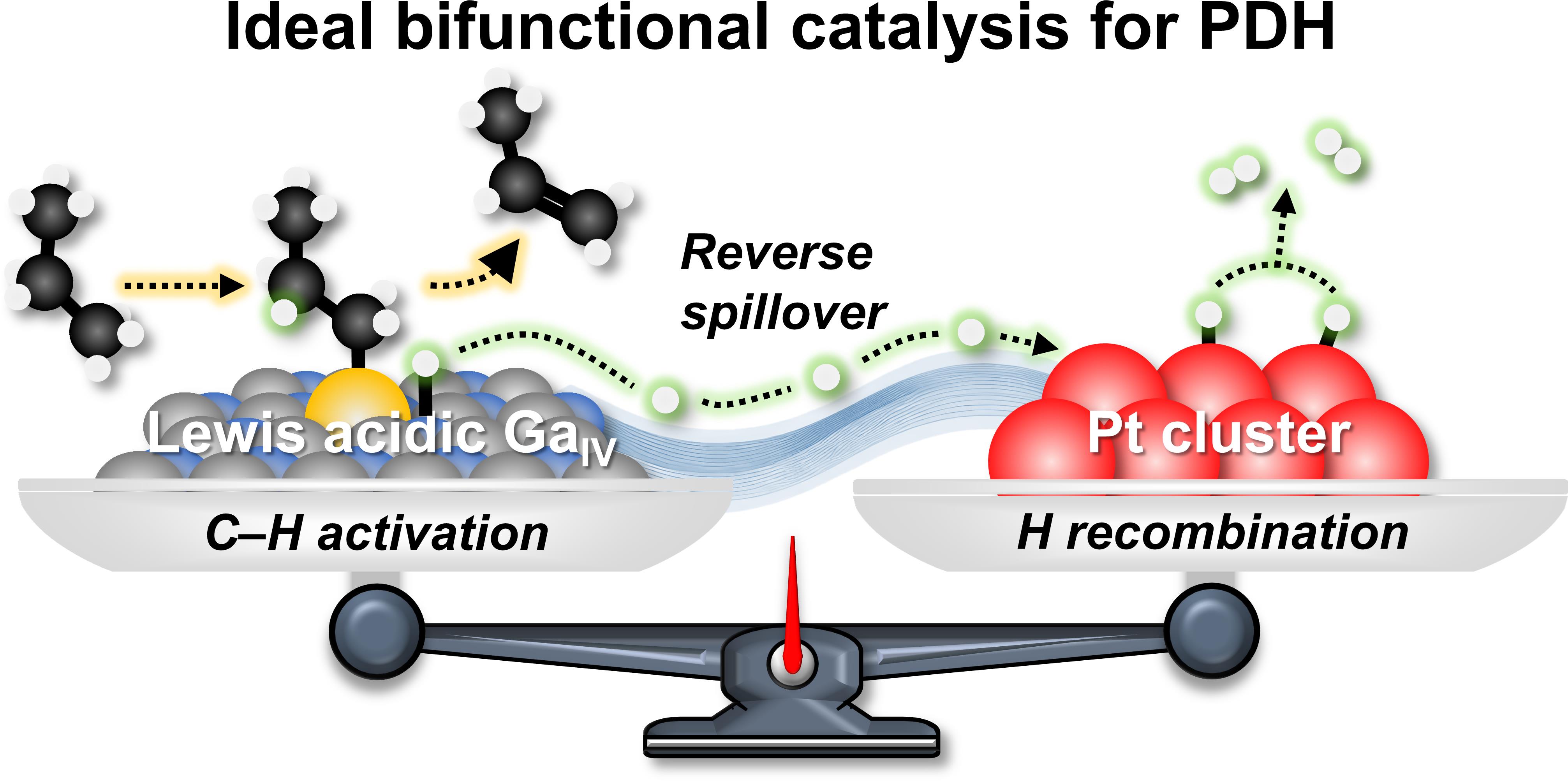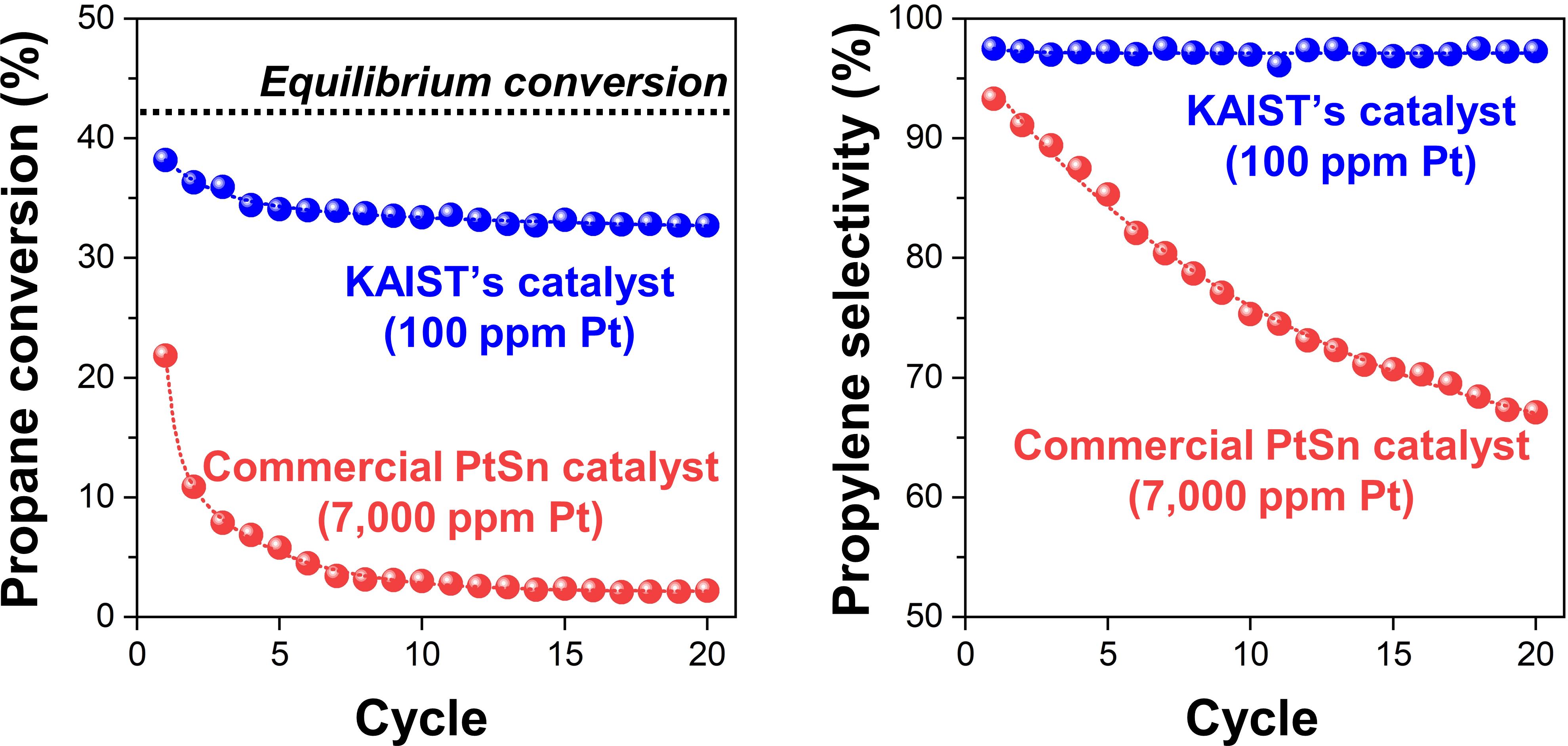- Ideal Bifunctional Catalysis for Propane Dehydrogenation over Pt-Promoted Gallia-Alumina and Minimized Use of Precious Element
- 관리자 |
- 2025-05-16 13:45:47|
- 97
- 2025-05-16 13:45:47|
ㅇ [Title] Ideal Bifunctional Catalysis for Propane Dehydrogenation over Pt-Promoted Gallia-Alumina and Minimized Use of Precious Elements
ㅇ [Journal] Journal of the American Chemical Society 2025, Volume 147, Issue 8, 6480–6491
ㅇ [Author] Susung Lee,§ Han Chang Kwon,§ Jaewoo Jeong, Hyeyoung Shin, DongHwan Oh, Jin Seok, Jeong-Chul Kim, and Minkee Choi,*
ㅇ [Abstrct]
Gallia-alumina (GaxAl2–xO3), promoted with a trace amount of Pt, exhibits excellent activity and selectivity in propane dehydrogenation (PDH) due to a bifunctional mechanism. Tetrahedrally coordinated Ga (GaIV) catalyzes C–H dissociation, while Pt facilitates H recombination into H2. To maximize the utilization of precious Pt and Ga, it is crucial to understand the optimal balance between the two catalytic functions or determine the ‘ideal regime.’ Here, we developed techniques to quantify the catalytic functions of Pt and GaIV sites. H2–D2 exchange rates (rHD) and propylene chemisorption (Q(GaIV,surf)) were used as effective measures of the catalytic functions of Pt and GaIV, respectively. When Pt is sufficient relative to GaIV (rHD/Q(GaIV,surf) ratio > 0.3 molHD molGaIV,surf–1 s–1), the catalysts exhibit ideal catalytic properties. During repeated reaction and regeneration cycles, the catalysts deactivated mainly due to Pt sintering, which leads to an imbalance between the two catalytic functions. Notably, catalysts with higher Pt contents lost catalytic activity faster than those with lower Pt contents, eventually exhibiting reversed activities. This is because increased Pt loading facilitates sintering. Doping a small amount of Ce3+ onto GaxAl2–xO3 effectively suppresses Pt sintering via strong metal-support interaction. Thus, optimal loadings of Ga and Pt, combined with Ce3+ doping to stabilize Pt, enabled the minimized use of precious elements while maintaining excellent catalytic properties. Even with 100 ppm Pt and 1 wt% Ga, the catalyst exhibited superior activity, selectivity, and stability compared to the benchmark catalyst, PtSn/γ-Al2O3, with 7000 ppm (0.7 wt%) Pt.

Fig 1. Schematic illustration of the ideal bifunctional catalysis between Ga and Pt for propane dehydrogenation.

Fig 2. Catalytic performance of the newly developed Pt-Ga bifunctional catalyst by KAIST (100 ppm Pt) and the commercial PtSn catalyst (7,000 ppm Pt).
| 첨부파일 |
|
|---|

